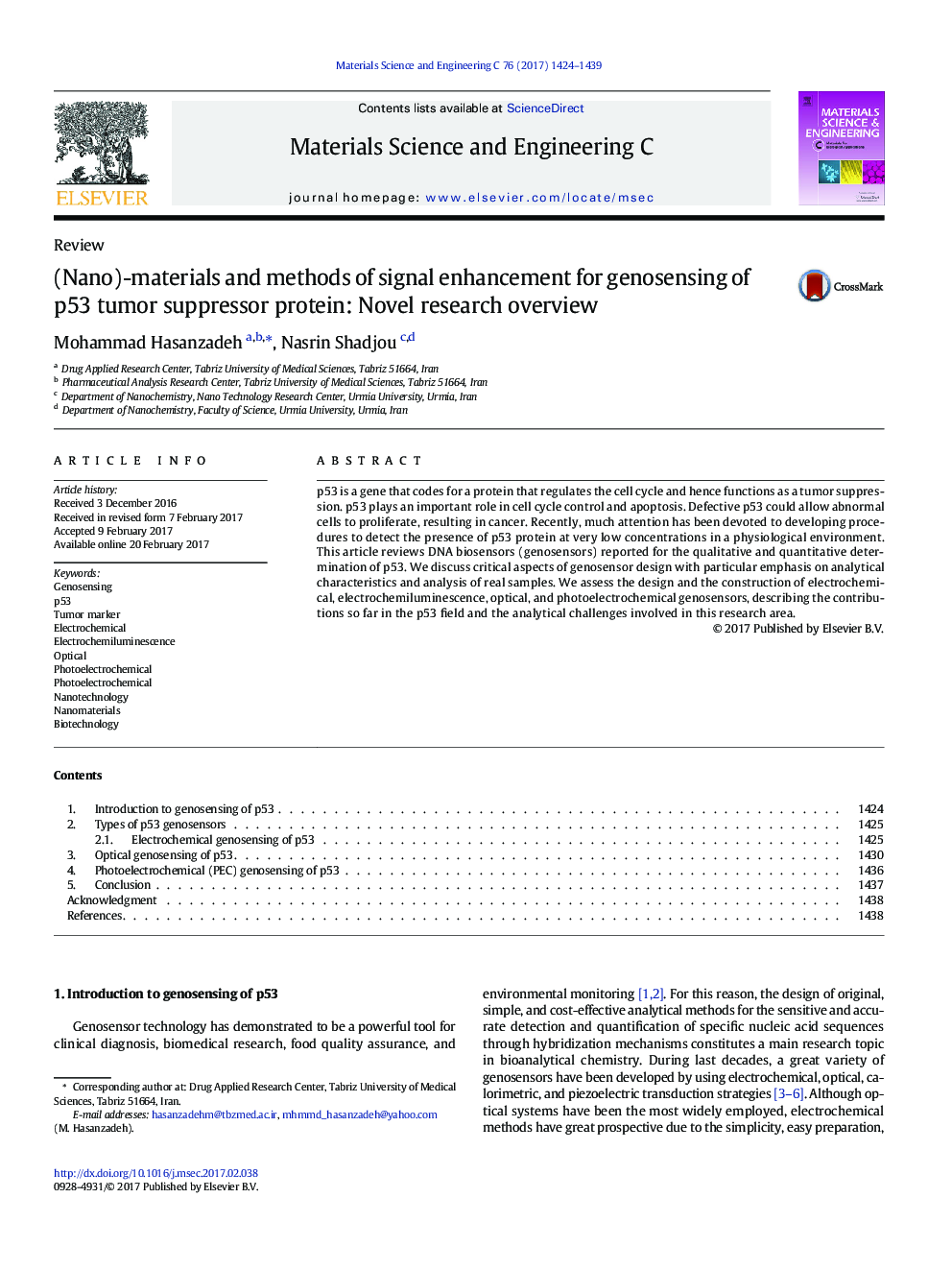| Article ID | Journal | Published Year | Pages | File Type |
|---|---|---|---|---|
| 5435084 | Materials Science and Engineering: C | 2017 | 16 Pages |
â¢Different types of genosensors for detection of p53 are described.â¢Their inherent advantages and limitations in analysis are discussed.â¢Signal amplification strategies are discussed.
p53 is a gene that codes for a protein that regulates the cell cycle and hence functions as a tumor suppression. p53 plays an important role in cell cycle control and apoptosis. Defective p53 could allow abnormal cells to proliferate, resulting in cancer. Recently, much attention has been devoted to developing procedures to detect the presence of p53 protein at very low concentrations in a physiological environment. This article reviews DNA biosensors (genosensors) reported for the qualitative and quantitative determination of p53. We discuss critical aspects of genosensor design with particular emphasis on analytical characteristics and analysis of real samples. We assess the design and the construction of electrochemical, electrochemiluminescence, optical, and photoelectrochemical genosensors, describing the contributions so far in the p53 field and the analytical challenges involved in this research area.
Graphical abstractDownload high-res image (192KB)Download full-size image
